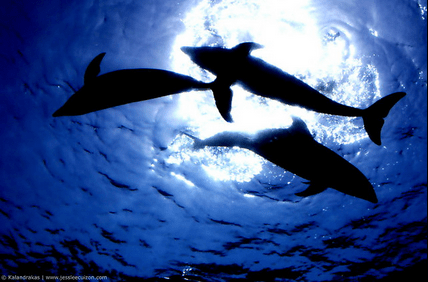Dolphin, the third-party browser made by Sequoia Capital-backed startup MoboTap, announced today that it has reached 100 million downloads globally, fueled in large part by tackling emerging markets such as Russia, India and Brazil. Dolphin also officially launched the second part of its growth strategy, Dolphin Labs, a team of engineers who will find ways to extend Dolphin’s ecosystem by integrating it into smart TVs, wearable tech, smart cars, and other new hardware.
While operating in stealth, Dolphin Labs launched its first product, an ephemeral mobile browser called Dolphin Zero that automatically deletes user info like browsing history, passwords, and cookies. The team is currently working on several projects, including a partnership with a smart TV manufacturer that will be announced in March, and integrating Dolphin’s browser with Chromecast, which will allow users to browse the web on their TV sets with Flash support.
“The whole idea behind Dolphin Labs is how to combine the Internet of Things with the Dolphin experience. We want to highlight the ability of users to control Dolphin with voice and gesture,” says Edith Yeung, Dolphin’s vice president of business development. “We want to make it easy and really fast to browse the Internet with any smart devices you have.”
Once Dolphin is available for smart TVs, for example, users will be able to navigate the browser on their television sets by speaking into their smartphones. Other Dolphin users have already found ways to use the browser on their Samsung Galaxy Gear watches by connecting Dolphin Browser Mini to their smartphones with Bluetooth, an experience Dolphin Labs wants to refine and release officially.
Despite hitting its impressive 100 million download milestone, Dolphin still competes with other third-party mobile browser makers, including Mozilla, Opera, and Maxthon. To differentiate, Dolphin’s strategy has focused on quickly adapting to the needs of users in vastly different markets.
The first version of Dolphin was available only in English and targeted to the U.S., Yeung told me. Then after landing a $10 million Series A from Sequoia Capital and Matrix Partners in July 2011, Dolphin began focusing on growth in Asian countries, especially China, Japan, Vietnam, and India, and inking deals with original equipment manufacturers.
In countries where many users don’t have credit cards or are on limited data plans, they can bypass Google Play and native apps in favor of the Dolphin Web apps store. Dolphin has also signed strategic partnerships with search engines in Russia, China, Japan, and the U.S. Dolphin Zero, meanwhile, was created to attract users of other ephemeral apps like Snapchat, most of whom are located in the States.
Yeung tells me that products created by Dolphin Labs will probably gain traction first in the U.S., Western Europe, and China, where a lot of the hardware used in smartwatches and smart TVs is manufactured in Shenzhen.
“Essentially we are mapping out all the potential use cases and prioritizing them,” she says. “If you have a laptop, a smart watch, a smart TV, a smartphone, then what are all the possible ways you can browse the Web?”
[Image: Jesslee Cuizon]
